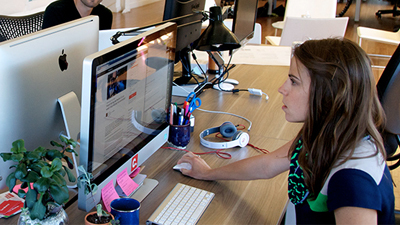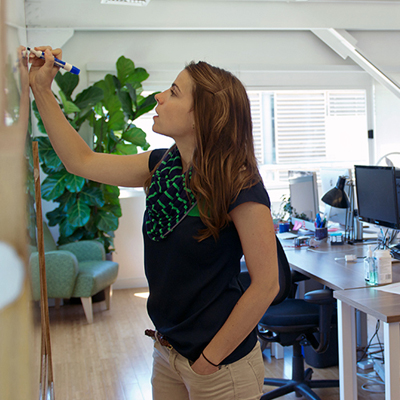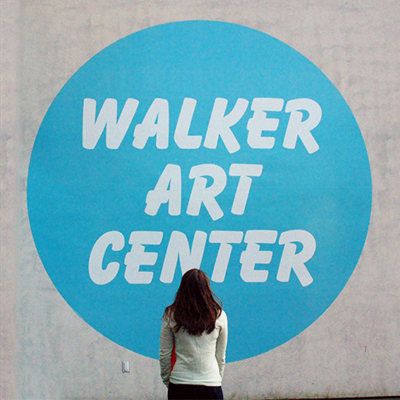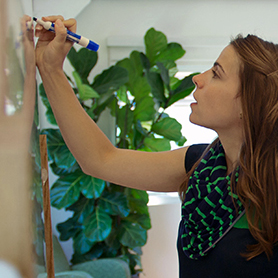Lauren Adams
Product Designer

Photograph by Nate Kerksick
Primary design concentration:
User-Experience Design, Social Design
Most preferred tools for designing:
Grid paper and a pencil, Adobe Illustrator, and Balsamiq Mockups

Photograph by Nate Kerksick
How and why did you choose to become a designer?
I actually resisted studying design at first; I thought I would enter a field that more obviously helped people, like medicine or social work. I took art and design classes as electives and I had one homework assignment to draw styrofoam peanuts. I stayed up all night drawing those things. Eventually, I translated my extreme excitement for sketching styrofoam into a sign that I ought to study design. My concerns about the field’s potential for impact faded when I took a design class that worked directly with local non-profits. I started reading about ‘social design,’ an emerging term at that time, and I decided to pursue that mountain.
What are some of the challenges you encounter as a designer and how do you deal with them?
As a product designer, it took me a while to get comfortable with iterative design cycles. I was used to finite projects, like print and social campaigns—but the internet never ends, so there’s always room to improve. Initially, this messed with my love of checking things off lists, but I’ve since become more patient. It’s like those YouTube montages of people who snap a selfie every day for a year—small frequent iterations can produce significant overarching change.
What is your definition of an “elegant solution,” that is, good design?
I think design can be inelegant and still be good—those attributes are independent, but I’ll speak to the latter. At the most basic level, good design satisfies its intended purpose. Packaging should compel purchase, furniture should invite function, websites should steer through information. Great design also has integrity—it considers factors such as message truthfulness, environmental impact and personal moral alignment. Milton Glaser’s “12 Steps in the Road to Hell” is a solid reference for this last point.
From skills to values, what makes a designer successful?
Oh man, too many skills to name! Time management, teamwork, user empathy, creative problem-solving, design history, attention to detail, ability to dish and digest criticism, online presence, presentation prowess, community engagement, and approximately one hundred more. Different positions require unique skills. No designer masters all of these, but a successful designer embodies many and consistently creates ‘good design’ (see previous question).

Photograph by Skye McNeill
How do you stay motivated and grow personally and professionally as a designer?
It’s a combination of immersion in and separation from design. I read about design, attend design lectures/events, and have several designer friends. These engagements provide essential advice, encouragement, and buzz from the field. But because design touches all areas of our lives, it’s hard to find a subject that’s irrelevant. In the same way a vacation refreshes you at work, I value balance and activities unrelated to design. Hiking recalibrates my outlook on life, so I’m more motivated to design afterwards.
For those aspiring to become a designer, whatever the discipline, what is your advice?
Hang in there. Like everything else, design and creative thinking takes practice. If you look back at your previous work and think it all sucks, you’re probably on the right track to make something that doesn’t suck. I’m more concerned for aspiring designers who think they’re already great. Also, respect the designer in everyone. Your accountant might not suggest appropriate art direction, but her insight can inform your solution.
What is your quest in design, from a professional practice, education or evolution standpoint?
Evolutionarily, I’m excited about design’s increasingly prevalent role in multidisciplinary teams tackling social problems. Design can delight and impress, but it can also spur revolutions. I’m always looking for examples and opportunities to deepen the meaning and impact of design.
Previous: Anne Fougeron | Next: Kate Koeppel

Support this solo initiative
What began as a collection of links has evolved into a comprehensive archive committed to creative culture—offering so far 395 interviews with under-the-radar Artists, Designers & Makers, in addition to 202 write-ups across events, books, movies, more. Free to explore. Free from ads. If you gain a level of motivation, knowledge, even delight, from Design Feast, please support on Patreon. Thanks for your consideration!
Wishing you continual success,
Nate Burgos, Content Creator & Publisher
Comments
There are no comments yet.
Leave Your Comment